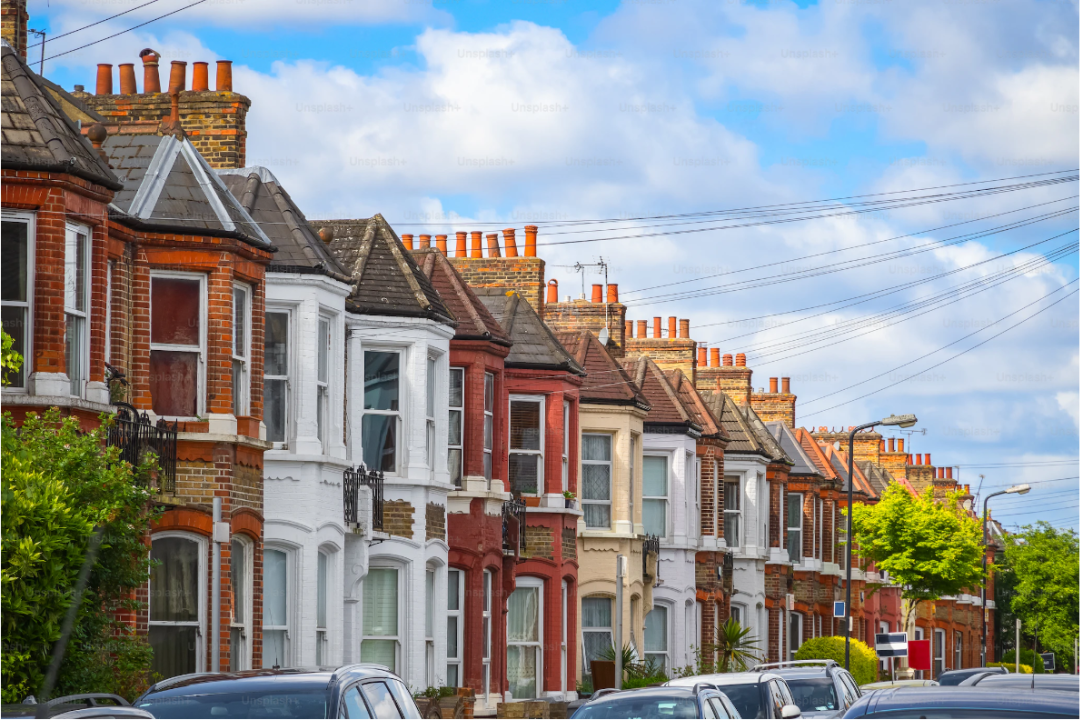
What loft conversions tell us about the housing crisis in Britain
It can be hard to spot from street level, but if you are ever travelling on a railway or a path which backs onto the rear of a row of houses you might notice a lot of them have ugly square extensions jutting out from the roof.
These loft conversions exploded in popularity following planning reform in 2015, meaning you didn’t need planning permission for certain types of conversions.
The UK has the smallest room sizes of any European nation, and new builds are only getting smaller, but a typical property can have 30% more space hidden in the loft and converting it can also increase the value of the property by 20 to 30% too.
Seems like a no-brainer, right? But the building work required will set you back at least £30,000 – more than the UK's median salary – so there must be good reasons for doing so.
It’s a symptom of the bizarre way we restrict housing development in the UK.
Loft conversions are proof of demand for large houses in a certain area and if we had a laissez-faire approach to planning, then developers would swoop in and build those larger houses – but we don’t, so they aren’t.
You may be thinking “boo-hoo, affluent people have to convert their loft instead of moving to a larger home – who cares. We should be focusing on 'affordable homes' anyway.”
Well it's not that simple because of filtering.
Filtering is basically the opposite of gentrification. As more expensive homes get built, wealthier people leave their smaller older homes allowing people with less income to move in and up the housing ladder.
Here is a thought experiment:
If you could only build one house and for whatever reason you had to choose between a £1million house and £250k house – which would alleviate housing need the most?
This is where things get weird because it’s the £ 1million house.
Why? It's Simple. The people buying a £1m house can also afford a 900k house if the £1m house isn’t built.
This means you get a ricochet down the housing ladder until some poor soul who can barely afford the £250k house gets outbid and ends up in insecure housing.
Whether that is temporary accommodation, a friend's sofa, or a tent at the roadside.
You can build a lot of small, cheap housing, but if you don’t build any large luxury housing – the small cheap housing BECOMES the luxury housing – because it's all you’ve built, it’s all there is.
The UK is market economy after all and I feel a lot of housing talking points forget this, anyone who has tried to get their hands on a flat in London recently will be all too aware there is always a bigger fish - someone who somehow has more money to spend than you do.
This is how a 3-bed terrace in Fulham ends up costing over £1 million – it’s not because Fulham has the best focaccia in London or the most Gails per capita.
Along with this, in the UK and other countries which derive their laws from British common law – think Australia, New Zealand, and the USA – existing homeowners are incredibly powerful when it comes to development in their area. Whereas the people who want to move to that area have no voice at all.
This may seem totally normal because it’s all we have ever known. However, we end up with a paradox of aggregation. On an individual level restricting development is generally good for existing property owners, it drives up house prices which makes people, on paper anyway, wealthier.
However, when that is happening all across the country it acts as a huge drag on growth. London is UK's most productive city, but the people who live there aren’t any better off than anyone else in the UK, because the surplus earnings are entirely absorbed by housing costs.
This is bad news for growth. Housing is fundamentally unproductive, and that hard-earned cash would be much more useful being spent in shops, cafés, pubs, restaurants, hotels – anything that keeps people employed and leads to innovation.
There is a lot of talk at the moment about “new towns” and building new urban areas from scratch within a commutable distance to our cities – almost always London. I think a better approach is to relax our planning laws to allow our cities to grow and more of our towns to grow into cities.
We can do this without sacrificing our pleasant green spaces by building at medium-density close to existing public transit connections. And if you are worried about the Greenbelt, you shouldn’t be, the Greenbelt grew more than our housing stock did last year.
Strategic Land and Assets - Development Surveying lead
5moThis is a really interesting article from George Garrett and provides the counter argument for some of the restrictive planning policies which despite good intensions do not allow the flexibility to solve the 'housing crisis'. Not on their own anyway. Of course, one can only wonder what the built environment would look like with a more laissez-faire approach to planning. It may not be better if developers could build unchecked whatever the market wants or whatever produces the biggest profits.
Senior Manager - Real Estate
5modid not know this, very interesting